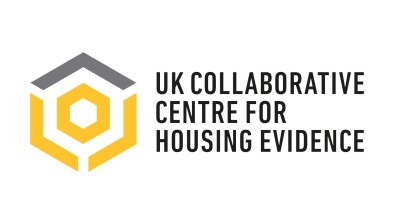Dr Jenny Preece: Home improvement services: value, challenges, and the ‘ideal’ service
Dr Jenny Preece
Dr Jenny Preece, a research associate at the UK Collaborative Centre for Housing Evidence, explores the dynamics of Home Improvement Services, their challenges, and the pursuit of an ‘ideal’ service.
In July we asked policy makers, practitioners and researchers with an interest in home improvement services to respond to a call for evidence. We were sent a range of reports and evaluations of different types of home improvement services, from single interventions to whole services. We also asked people what made for a good service, what more was needed, and what might be missing. Here we report back on some of the issues raised by respondents and the wider evidence base.
Practitioners highlighted the value of services for end users, and the transformative impact of relatively small improvements to the home, for example, installing grab rails or removing hazards. It was also recognised that early intervention around these smaller adjustments could prevent more significant disrepair issues from emerging or prevent an accident that could result in a hospital stay. One respondent made the point that if home improvements can help to keep people healthier, then this enables people to lead the sort of lives that most of us take for granted. We know that it is often through losing an important aspect of ‘home’ – whether that is a feeling of safety, or independence, or comfort – that we notice something that was previously a taken for granted part of our daily lives.
Although respondents pointed us to a range of evidence about the importance of different home improvement services and how these could be reimagined, there were mixed views about the extent to which the overall framework through which services are delivered around the country was fit for purpose. Services provided much needed support for those who can access them, but there were concerns around the ad-hoc nature of access, the postcode lottery of provision, the inequalities this may reproduce, how well an ‘asset rich/cash poor’ client base is supported, and how services can be sustained and evolve to meet changing needs and pressures.
A number of respondents highlighted funding and financing as being key challenges for the future of home improvement services. Whilst the Disabled Facilities Grant is funded nationally, the only source of national funding to address housing disrepair in private sector homes ceased in 2010. However, funding is not just a question of paying for the material improvements to homes but is also about ensuring that services can employ a range of suitably skilled staff to assess and deliver improvements, from technical specialists and occupational therapists to contractors. As we know from previous research, when funding ceases, training and employment pathways may also shut down. Effective partnership working across sectors – particularly health, social care, and housing – can also be challenging but was seen as essential to good outcomes for clients.
So, what are the characteristics of an ideal home improvement service? This is something we will be doing a lot more work on over the coming year, but for now respondents highlighted:
- A case worker-led approach
- Fast referral processes and simple eligibility criteria
- Integration across providers and strong partnerships working across sectors
- Well-staffed with minimum qualifications for staff
- Fair and affordable finance options for clients and long-term and stable funding for services
- Consistent minimum services across areas, but the ability to evolve and adapt to meet different local needs
- Through all of this, keeping in mind the person at the heart of the work
In addition, from wider research related to home improvement, another characteristic of an ideal delivery model is to have a single entry point – a ‘good home hub’, through which residents from all tenure groups can benefit from advice and signposting to help them access different home improvements.
Some of the challenges in existing provision include the way in which services are organised across the country. Home improvement services are often arranged at a local authority level, which means that the services on offer in one place might be different to somewhere else, and the access routes and eligibility criteria can also vary. The ability to vary services to meet the needs of local areas is important, because what is a pressing issue in one city might not really be relevant to local needs elsewhere. However, this can also contribute to what respondents called the ad hoc nature of provision, and something of a postcode lottery. It also means that we do not always have good knowledge about what is happening in different parts of the country, which can be a barrier to sharing learning. There are some existing opportunities for information sharing, for example, Foundations – the national body for home improvement agencies and Disabled Facilities Grants – hosts regular roadshows around the country, which bring together practitioners and those with an interest in adaptations and home improvements. We are also thinking about how we can start different conversations with people interested in the landscape of home improvement and how we can share emerging findings with different communities from our evaluation of home improvement services; there will be a range of opportunities for engagement throughout the project. As a start, we have spotlighted a few examples of the range of home improvement services available around the country.
Spotlight on services
Healthy home assessments
Preston Care and Repair caseworkers carry out free ‘healthy home assessments’ to see whether any repairs or adaptations can be made to improve residents’ health, safety, and wellbeing. They assess homes in four areas: safety, security, warmth, and independence. Residents are given personalised advice and guidance, including referrals to services where appropriate. In our report on housing policy and poor quality homes we proposed a ‘home MOT’ style assessment which was modelled on the Wirral Healthy Homes scheme (operating in selective licensing areas). Home assessments like these offer an opportunity to prevent accidents and improve the use and comfort of homes. It is important to consider homes holistically and on a case-by-case basis, as existing research suggests that it is crucial to understand the relationship between the resident and their environment in assessing potential hazards and sources of stress or discomfort.
Healthy homes, healthy lives
Healthy Homes, Healthy Lives is a UKRI-funded trailblazer project run by London Rebuilding Society and more2life (one of the UK’s largest equity release lenders specialising in working with over-55s). The scheme is aimed at tackling a commonly recognised problem – that some homeowners are asset-rich, but cash-poor, finding it difficult to finance home repairs and improvements because of limited funds and restricted ability to access affordable finance in later life. The HHHL scheme uses equity release to enable more significant improvements to the home, which might include things like extending the space to make room for live-in care or splitting homes into more than one residence. London Rebuilding Society is providing a ‘hand holding’ service throughout, managing the contractor on behalf of the clients. A video explains more about how individuals can achieve “a warm, safe and secure home – where you can stay healthier, and live there for as long as you like, independently”. Projects like this (supported by the ‘healthy ageing challenge’ funding) were selected to be innovative and scalable, and will be evaluated through a social cost-benefit analysis.
Dementia services
Oxford City Council offer a range of dementia advice and support, including help with home adaptations. A dementia advisor can refer individuals for measures in the home that could help them to remain living independently at home. This can include fitting memory aids like clocks, calendars or whiteboards, or installing locks and signage; these measures can be requested and installed free to recipients. This can help to make home life safer and be an important source of reassurance for occupants and their families.
This article was originally posted on the CaCHE website.








